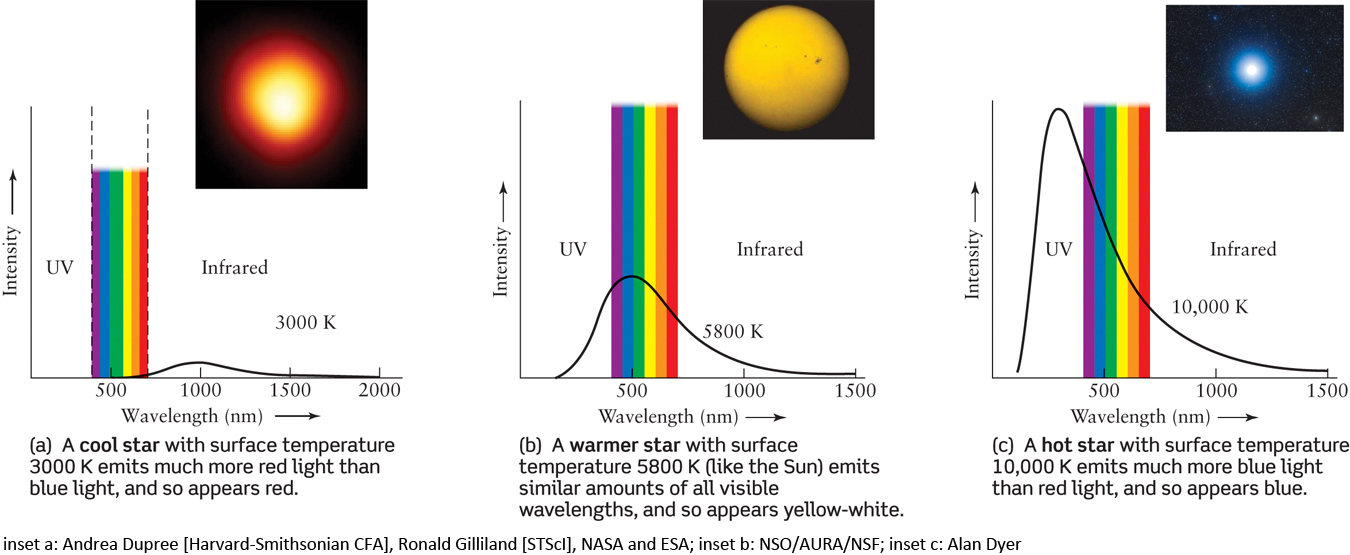10-4 A star’s color depends on its surface temperature
As we saw in Chapter 2, stars have different colors, depending on their temperatures. Some people can clearly see these colors, even with the naked eye. For example, some can easily see the red color of Betelgeuse, the star in the “armpit” of the constellation Orion, and the blue tint of Bellatrix at Orion’s other “shoulder.” Colors are most evident for the brightest stars, because most people’s color vision does not work well at low light levels.
CAUTION
Remember that the light from a star will appear redshifted if the star is moving away from you and blue-shifted if it is moving toward you. But for even the fastest stars, these color shifts are so tiny that it takes sensitive instruments to measure them. The red color of Betelgeuse and the blue color of Bellatrix are not due to their motions; they are the actual colors of the stars.
Like most glowing objects, a star’s color is directly related to its surface temperature. The intensity of light from a relatively cool star peaks at long wavelengths, giving off mostly long wavelength light, making the star look red (Figure 10-8a). A hot star’s intensity curve peaks at shorter wavelengths, so the star looks blue (Figure 10-8c). For a star with an intermediate temperature, such as the Sun, the intensity peak is near the middle of the visible range of the spectrum. This gives the star a yellowish color (Figure 10-8b). This leads to an important general rule about star colors and surface temperatures that we will use again and again throughout our study of astronomy: Red stars are relatively cold, with low surface temperatures; blue stars are relatively hot, with high surface temperatures.

235
Figure 10-8 is important enough to spend some time studying. It dramatically illustrates how astronomers can accurately determine the surface temperature of a distant star, not by traveling to it, but simply by carefully measuring its color. To do this, the star’s light is collected by a telescope and passed through one of a set of differently colored filters. The process is then repeated with each of the filters in the set. The star’s image will have a different brightness through each colored filter, and by comparing these brightnesses astronomers can find the wavelength at which the star’s intensity curve has its peak—and hence the star’s temperature.
CAUTION
As we will discuss in Chapter 11, tiny dust particles that pervade interstellar space cause distant stars to appear redder than they really are. In the same way, particles in Earth’s atmosphere make the setting Sun look red. Astronomers must take this reddening into account whenever they attempt to determine a star’s surface temperature from its color.
Question
ConceptCheck 10-7: Which is hotter, a green star or a yellow star?